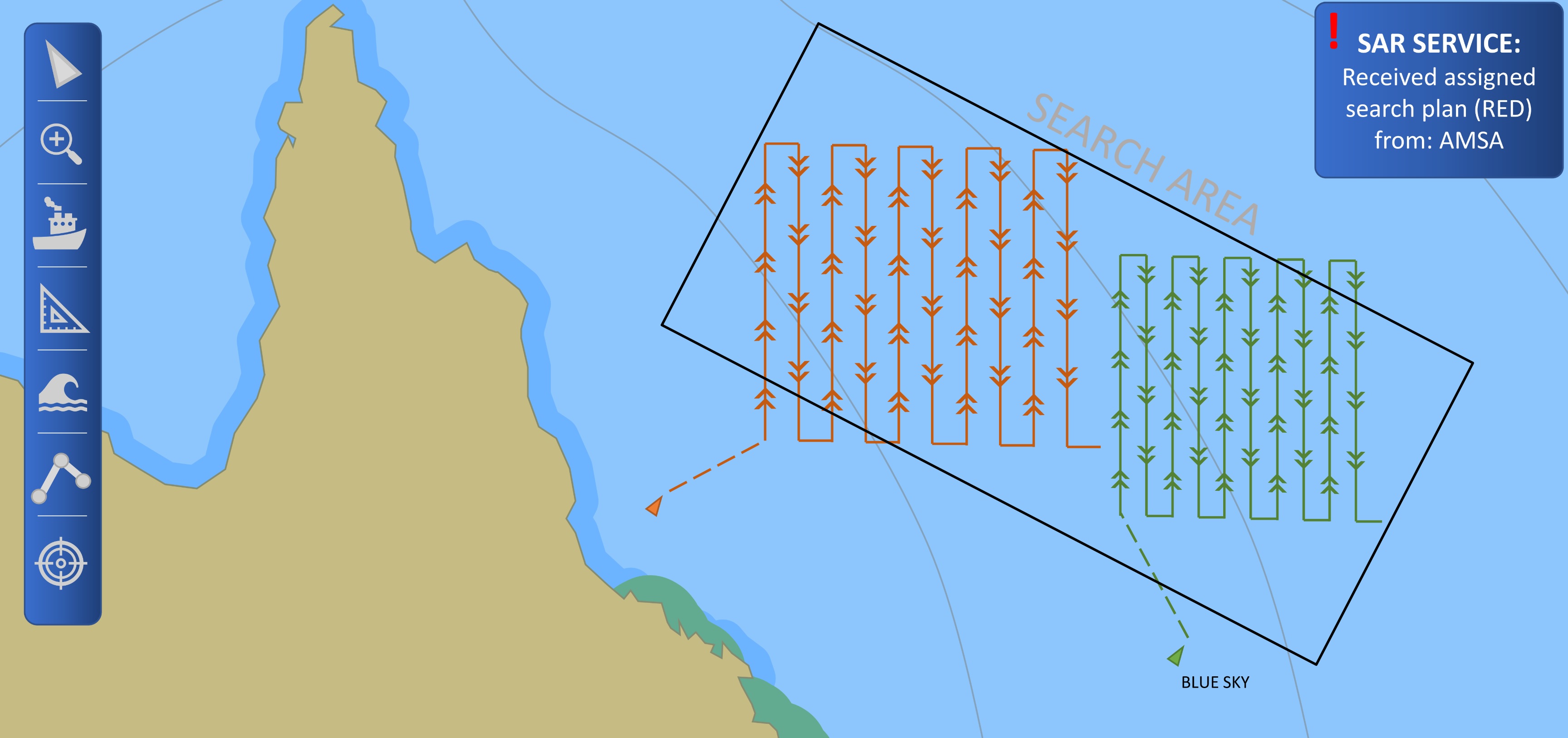Maritime services (MS) harmonise the exchange of maritime-related data.
They aim to improve the safety of navigation at sea. Using new technologies, these services can:
- contribute to reducing accidents and incidents
- optimise shipping routes and operations
- improve communication and information exchange among ships, ports, and other stakeholders in Australia.
These advancements could revolutionise the maritime industry. Making it more safe, efficient and sustainable.
The International Maritime Organization currently defines a set of 16 maritime services in e-Navigation. (See MS1-MS16). The following section describes example services that are relevant to the work of AMSA.
AMSA’s joint rescue coordination centre
MS5 maritime safety information service standardises the provision of maritime safety information. This service aims to provide mariners with:
- navigational and meteorological warnings
- meteorological forecasts
- other safety-related messages.
This service builds on existing infrastructure and utilises regulations including:
- SOLAS chapter IV
- IHO Publication S-53 (Joint IMO/IHO/WMO Manual on maritime safety information)
- SafetyNET manual.
New generation MSI services deliver standardised machine-(and human)-readable information. Systems such as ECDIS or MASS can use this data. This will improve situational-awareness and decrease crew workload.
MS 16 implements a search and rescue (SAR) service. It’s used to control and conduct operations and detect maritime incidents. Its goal is to:
- assist crew and passengers in distress
- establish effective communication
- coordinate allocation of SAR resources.
Using structured data models in this way for the exchange of information:
- avoids human errors and miscommunication (e.g. when providing searching patterns to assisting ships)
- provides redundancy beyond relying only on voice communication
- increases the possible level of detail in searching patterns
- contributes to enhanced situational awareness within Rescue Coordination Centres (RCCs)
- helps mariners display relevant information on their ECIDS.

This image depicts an illustration of a SAR search pattern. SAR authorities can use digital data formats to send search patterns to SAR vessels or vessels in vicinity of an incident. This avoids miscommunication and helps to increase the efficiency of SAR operations. Services include:
MS1: Vessel traffic service
Vessel traffic services are an integral part of AMSA’s vision to ensure safe and clean seas, saving lives. But most communication is still based on analogue voice.
The digital exchange of routes (with the new S-421 data model) and other navigational information between ship and VTS will:
- improve the efficiency of information exchange
- support informed decision-making
- avoid miscommunication
- reduce human errors.
AMSA maintains a network of marine aids to navigation (AtoN) systems. These meet international standards to ensure safe navigation in Australian waters.
We use AtoNs according to the volume of traffic and degree of risk. We expect increased use of electronic AtoN (e.g., AIS AtoN) when marking hazards to navigation. (For temporary hazards in particular.)
Learn more about AMSA’s navigation services now and into the future in our Navigations Services in Australian Waters: outlook to 2035.
The aids to navigation service will use digitalisation technologies (such as virtual and synthetic AtoNs) to improve:
- efficiency
- cost-effectiveness
- safety impact.
We need to consider these digitalisation technologies carefully. But adding them to our existing AtoN network could improve navigation safety and network management. A digital AtoN information service will make the information easily available to mariners. Again onboard ECDIS can integrate this service.